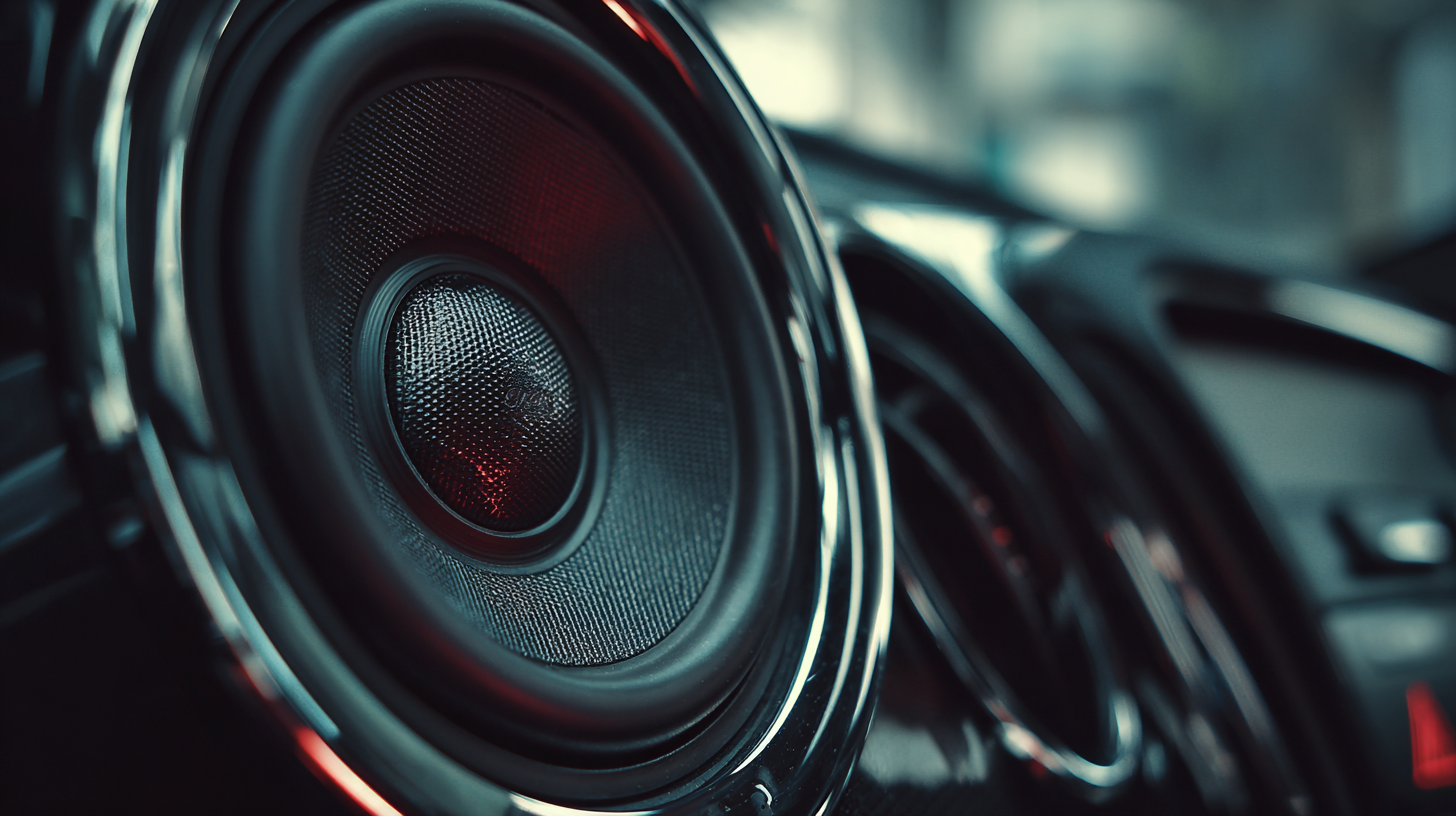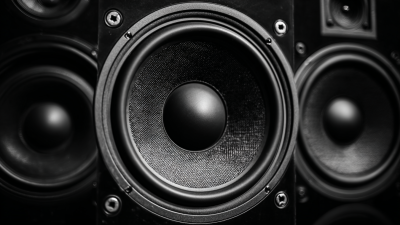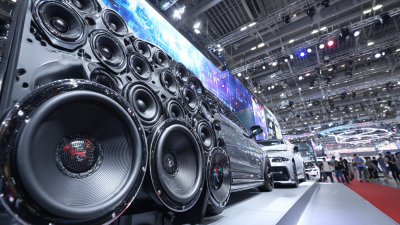The Science Behind Car Sound Dynamics and What It Means for Your Driving Experience
Understanding the intricate relationship between car sound dynamics and the overall driving experience is pivotal for both manufacturers and consumers alike. According to a report by the Society of Automotive Engineers (SAE), approximately 70% of drivers consider cabin sound quality to be as important as the vehicle's performance and fuel efficiency. The modulation of sound—be it the subtle hum of the engine, the comforting silence of a well-insulated cabin, or the exhilarating roar of sports cars—plays a significant role in shaping perceptions of comfort, safety, and excitement on the road. Furthermore, advancements in sound engineering have allowed manufacturers to fine-tune car sound to enhance user experience, as evidenced by a study from J.D. Power which indicated that vehicles with optimized sound profiles receive up to 15% higher customer satisfaction ratings. As we delve into the science behind car sound dynamics, we uncover how these auditory elements can transform a mundane drive into a remarkable journey.

The Role of Sound Waves in Vehicle Performance and Safety
The intricate relationship between sound waves and vehicle performance and safety is an area that demands greater attention from both manufacturers and drivers alike. According to a recent industry report by the Society of Automotive Engineers (SAE), sound waves generated by a vehicle can provide critical feedback about its mechanical condition. For instance, specific frequency patterns can indicate an imbalance in engine components, potentially foreshadowing serious mechanical failures. By analyzing these sound profiles, engineers can develop more reliable diagnostic tools that can enhance the overall driving experience.
Moreover, sound plays a significant role in vehicle safety. The National Highway Traffic Safety Administration (NHTSA) found that vehicles equipped with audio warning systems for pedestrians can reduce accidents by up to 30%. This underscores the importance of integrating sound dynamics into the design phase of vehicles, ensuring that auditory signals alert not just the driver but also pedestrians and cyclists. As electric vehicles become more prevalent, manufacturers are tasked with creating artificial sounds that not only comply with safety regulations but also enhance the driving experience, demonstrating how critical sound dynamics are in the realm of modern automotive engineering.
Understanding Noise, Vibration, and Harshness (NVH) in Cars
 Noise, Vibration, and Harshness (NVH) are critical factors in determining the overall comfort and driving experience of a vehicle. With advancements in automotive technology, manufacturers increasingly focus on reducing NVH levels to meet consumer demands for a quieter, more refined ride. The pursuit of achieving low NVH is no longer merely a luxury but a necessity for satisfying customer expectations in a competitive market.
Noise, Vibration, and Harshness (NVH) are critical factors in determining the overall comfort and driving experience of a vehicle. With advancements in automotive technology, manufacturers increasingly focus on reducing NVH levels to meet consumer demands for a quieter, more refined ride. The pursuit of achieving low NVH is no longer merely a luxury but a necessity for satisfying customer expectations in a competitive market.
Achieving optimal NVH involves a complex interplay of engineering and design. From the selection of materials to the integration of specialized components like bushings, every element plays a role in managing sound and vibrations within the car. For instance, effective insulation and the use of advanced damping materials can significantly reduce unwanted noise, making the driving experience more enjoyable.
Innovations in this area have enabled some brands to set new benchmarks in NVH performance, showcasing how meticulous engineering can transform the seemingly intangible aspects of vehicle comfort into a tangible advantage for drivers.
How Engine and Exhaust Sounds Influence Driver Perception
The sound produced by a car’s engine and exhaust system plays a crucial role in shaping the driver’s perception and overall driving experience. Engine sounds, ranging from a gentle purr to a roaring growl, can evoke a sense of power and performance. These audio cues help drivers gauge how the vehicle is responding, impacting their confidence and decision-making on the road. A spirited engine note can enhance the thrill of driving, providing an immediate connection between the driver and the machine.
Exhaust sounds further sculpt the auditory landscape of a car, often reflecting its performance capabilities. A refined exhaust tone can indicate a well-tuned vehicle, suggesting efficiency and control, while a louder, more aggressive sound can signal strength and sportiness. Drivers often develop preferences for specific sound profiles that align with their personalities and driving styles. This emotional link to sound can transform a mundane journey into an exhilarating adventure, illustrating how intricately car sound dynamics influence not only perception but also the overall enjoyment of driving.

The Impact of Road and Tire Noise on Driving Comfort
Road and tire noise significantly affect the driving comfort and overall experience. According to a study by the Society of Automotive Engineers, tire noise can contribute up to 75% of the cabin sound in vehicles traveling on highways, making it a critical factor for car manufacturers aiming to enhance ride quality. High-frequency noise from the tread pattern and low-frequency rumble from the interaction between tires and roads can be amplified by the vehicle's structure and materials, leading to a more uncomfortable driving experience.
Moreover, research from the National Highway Traffic Safety Administration indicates that excessive road noise can distract drivers, increasing their likelihood of errors. The report highlights that for every 10 decibels over the typical cabin noise level, the risk of accidents doubles. This underscores the importance of effective noise reduction strategies, such as using sound-absorbing materials and optimizing tire designs. Innovations aimed at reducing road and tire noise not only improve comfort but also contribute to safer driving environments as they allow for better concentration on the road.
The Science Behind Car Sound Dynamics and What It Means for Your Driving Experience
| Noise Type | Decibel Level (dB) | Impact on Driving Comfort | Common Mitigation Strategies |
|---|---|---|---|
| Tire Noise | 70-80 dB | High impact, can lead to fatigue during long drives | Use of sound dampening materials, tire design optimization |
| Wind Noise | 60-75 dB | Moderate impact, can disrupt conversation and music | Aerodynamic design improvements, weather stripping |
| Engine Noise | 70-85 dB | Can enhance or detract from the driving experience | Engine mounts, sound insulation |
| Road Surface Noise | 68-80 dB | Significant impact on comfort, especially on rough surfaces | Smooth road technology, noise-reducing tire treads |
| Braking Noise | 60-75 dB | Can indicate maintenance issues or affect perception of safety | Quality brake pads, regular inspections |
Technological Innovations in Automotive Sound Engineering
Recent advancements in automotive sound engineering have transformed the way drivers and passengers experience sound within vehicles. Innovations such as active noise cancellation systems are designed to enhance comfort by reducing unwanted external noise. These systems use microphones to detect ambient sounds and then produce sound waves that are phase-inverted, effectively canceling out the noise. This technology not only improves auditory comfort but also allows for a more immersive sound experience when listening to music or engaging in conversation.
Moreover, the integration of sound design in electric vehicles has opened new avenues for automotive acoustics. Engineers are now crafting bespoke sound profiles that define the identity of electric models, addressing concerns about the silent nature of these vehicles. This includes both external sounds to alert pedestrians and internal sounds to enhance the driving experience. These developments showcase how technological innovations in sound engineering are not merely functional but are reshaping the overall driving experience, making it safer and more enjoyable while also adding a layer of personalization to each vehicle.
The Science Behind Car Sound Dynamics
This chart illustrates the sound frequency levels (in decibels) typical in different vehicle scenarios, showcasing how sound dynamics impact the driving experience.
Related Posts
-

Understanding the Unique Features of Coaxial Speakers and Their Benefits
-

Exploring Innovations in Car Sound Systems at the 138th China Import and Export Fair 2025
-

Ultimate Checklist for Choosing the Best Car Speakers for Your Sound System
-

How to Enhance Your Driving Experience with Premium Car Sound Systems
-

Ultimate Guide to Comparing the Best Car Audio Systems for Your Vehicle
-

The Ultimate Guide to Choosing the Best Car Speakers for Your Driving Experience
